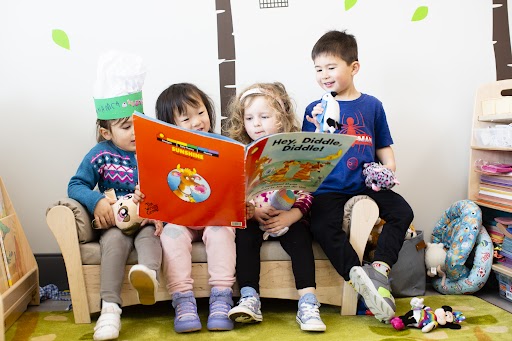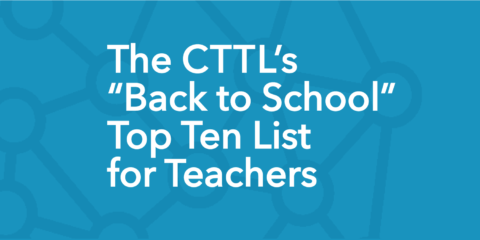The cultivation of a society where adult literacy provides the foundation for personal, corporate, and political growth across differences is grounded in the capacities built in early childhood and elementary classrooms. This sort of critical reading creates opportunities for disrupting and “unpacking myths and distortions and building new ways of knowing and acting upon the world” (Luke, 2014) that challenge our socially conditioned assumptions and practices. Reading in this larger context involves high order cognitive engagement and is impacted by many factors including saliency determination, perspective-taking, critical thinking, openness to the experiences of others, and reasoning. However, without prolonged practice with the foundational processes of reading, this goal becomes inaccessible to most, even when we work to specifically target these higher order skills. Becoming aware of the many underlying factors that impact reading competency is essential for effective instructional design at any grade level. This is the third of a series of short articles that will endeavor to unpack these factors in response to real questions asked by teachers.
Question 3
What is VOCABULARY… really? And how do we design our lessons to make the biggest difference in this important reading pillar?
Great question!
The first thing we should know is that there is a strong correlation between vocabulary scores and reading comprehension scores in late elementary assessments (Chall & Jacobs, 2003). The second important thing to be aware of is that disparities in outcomes in vocabulary (and the associated reading comprehension) are predictable, and therefore, able to be surmounted (NCES, 2012). For an area of learning that holds this much importance, there is little for teachers to lean on in terms of research-informed curriculum or pedagogy. This may be due in part to the fact that linguistic usage and meaning can to some degree be implicitly absorbed, simply through the everyday conversational interactions each of us experience in life. The fact that we rely too heavily on implicit development of vocabulary is evident in the disparities of reading outcomes. Those children exposed in the home to a wide range of academically high usage words show higher outcomes as readers. The answer is to make words and their meanings visible for all students through explicit instruction and practice in context.
Vocabulary Breadth
Interestingly, as the elementary division of our school transformed reading instruction practices over the last few years, one of the first things we needed to do was to establish a common vocabulary that gave all faculty members full and clear access to the knowledge on which we base our decision-making and instructional design. This required explicit explanation, repeated exposure, commitment to usage, and many conversations to unpack the nuances of previously held, common interpretations of many domain-specific words. The shift in language within the building is a sign of the shift in understanding about reading development and the elements needed for success. Grapheme, phoneme, morpheme, etymology, and orthography are now common-place words used to communicate with colleagues about instruction and student reading profiles. This small foray into the world of linguists actually gave us insight into what our own students need to support their understanding every time we move into a novel area of study. Think of this as the breadth of vocabulary. The sheer number of words a reader knows the meaning of connected to the specific topic or genre of the text impacts their understanding and application of the ideas held within.
Vocabulary Depth
Another important consideration in the vocabulary story is the idea of depth. English has many words that serve in multiple contexts, each time carrying a context-specific meaning. The same word can be used as a verb and a noun, and in modern English these are increasingly being turned into adjectives. For example: you raise your hand in class to get your teacher’s attention (lift), you might be given a raise in your weekend job (salary increase), you can raise the question of equity (put forward for discussion), your parents raise you (guide your practical and moral development), and in emerging English, you could belong to a raised congregation (uplifted in faith). It is often the multi-context nature of words in our language that can unravel comprehension for a child who demonstrates appropriate fluency with decoding. It sounds as if they are reading at a high level, but there seems to be a disconnect between this and their scores in comprehension.
So, to answer the first part of the teacher’s question, if we think of vocabulary as the store of word meanings a student has to draw from when they read, including topic-determined contextual variations, it gives us a working definition that can inform our lesson design and curriculum decisions. Note: for clarity I am differentiating vocabulary as a subset of lexicon, which includes a much more robust and sophisticated understanding of the words of a language.
On to the HOW…
- One helpful aspect of language is that it carries small units of meaning called morphemes. By learning the origin and meaning carried by these morphemes, young readers are able to piece together a probable meaning for unfamiliar words. English is not as rich in morphology as many other languages, however there are many consistently used morphemes that dominate academic language and become increasingly important as people enter fields of study such as science or law. This may seem like a far-off consideration for children in elementary classrooms, however, if our goal is to grow a well-read population, the seeds of morphological awareness need to be explicitly taught early and used often. Hint: Start with the easier Anglo-Saxon morphemes and move slowly toward the more complex Latin, then Greek.
- Inventory your subject area or unit for the essential words needed to understand the content or concept you are teaching. Teach these alongside the new concepts as part of student knowledge-building. Hint: Choose 1-3 words each day or week connected to your topic and create a fun game where students are rewarded (perhaps by a class cheer, or adding to a visible class count) each time they find a way to incorporate the target word into their classroom conversations.
- Create a student practice where they regularly identify words in a mentor source, color coding important words as known, have some idea, or unknown meaning. Hint: have students propose their definitions (perhaps sharing with a trusted partner, or privately in writing to avoid classroom shaming) before giving the conventional meaning in the context of the text or topic – our brains pay much closer attention when correcting mistakes than passively receiving information.
- Teachers in every content area, should maintain a vocabulary wall that grows over time including categories to organize new words in relation to each other. This practice is one of the ways that all teachers are teachers of literacy. Change this chart or display when topics change or it becomes unwieldy. Hint: Use spaced practice to revisit old vocabulary words in your content area across the year.
- To make meanings sticky, add gestures, dual code with images, and use key words repeatedly during your lessons to add context. Hint: Give students time to generate their own jingles to connect meaning to unusual words. (Example: Heuristics are what I jump to do, when I don’t have time to think it through.)
- As in every area of teaching, be diagnostic. Collect data frequently on what your students know and haven’t yet mastered in order to identify those for whom your instructional approach is not working well. Hint: Prioritize time during reading instruction for small group work with students who need review, repetition, or reteaching using a different strategy.
There is no magic pill to improve breadth and depth of vocabulary. Buying a packaged vocabulary curriculum that you start on day one and work through sequentially with no connection to your topics of study is not going to improve outcomes for all your students. It is up to us as educators to prioritize the explanation and frequent use of words central to our discipline or topic. Ongoing student confusion about the difference between area and perimeter in math has everything to do with how well teachers first created context around the technical words and then embedded this vocabulary into everyday classroom conversations in and out of math lessons using intentionally spaced practice. Vocabulary development matters not only for reading comprehension outcomes, but for every aspect of a learners journey. The more words we know on any given topic, the more specific and sophisticated our thinking and conversation can be around those ideas. So often these days teachers are told to talk less, but in this case, our students need to hear us using words precisely and accurately as they grow capacity in all the areas of study we bring to the table. We need to lift our language use to raise theirs.
References:
Chall, J. S., & Jacobs, V. A. (2003). The classic study on poor children’s fourth-grade slump. American eEducator, 27(1), 14–15
Luke, A. (2014). Defining critical literacy. In J. Z. Pandya & J. Ávila (Eds.), Moving critical literacies forward: A new look at praxis across contexts (pp. 19–31). New York, NY: Routledge




